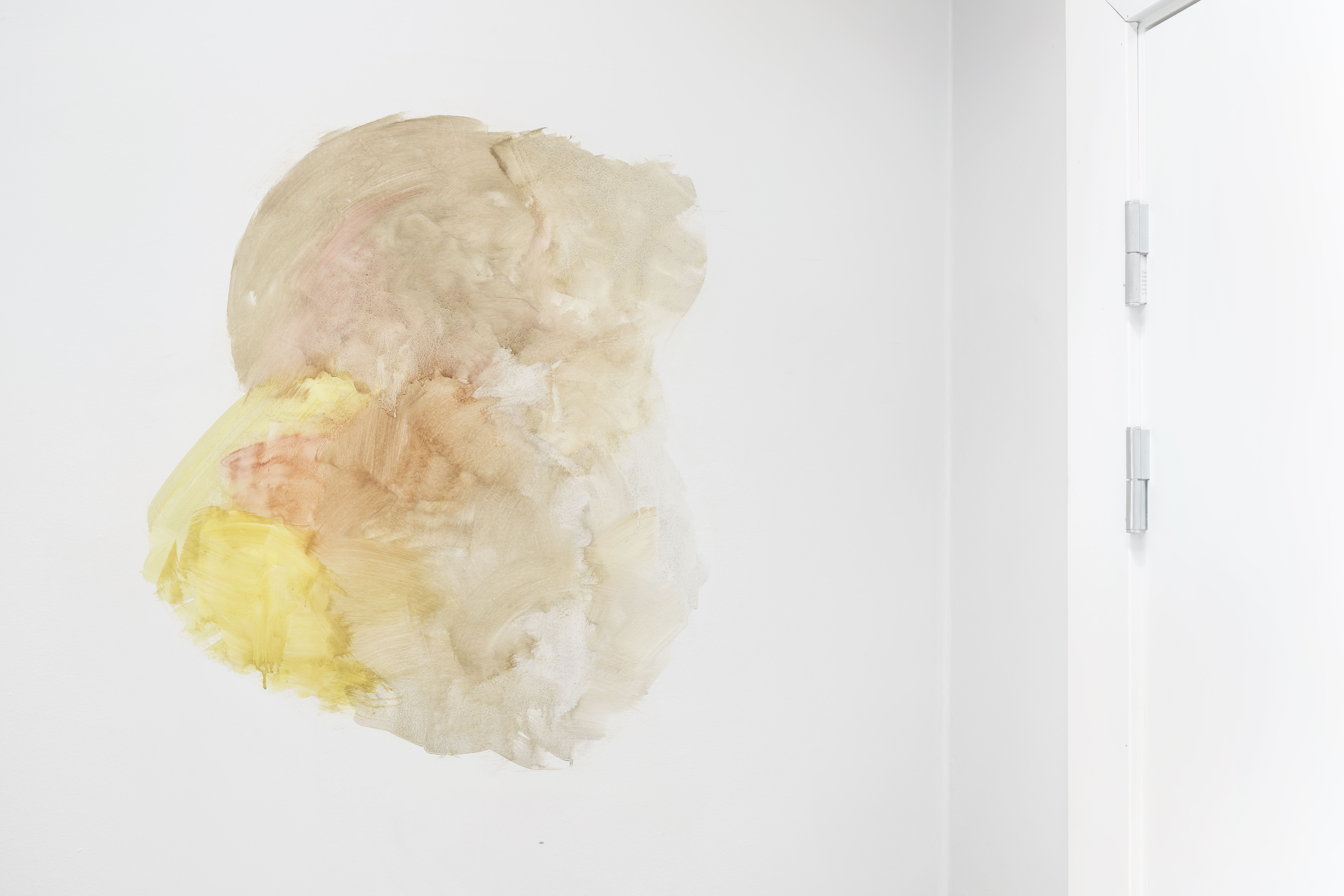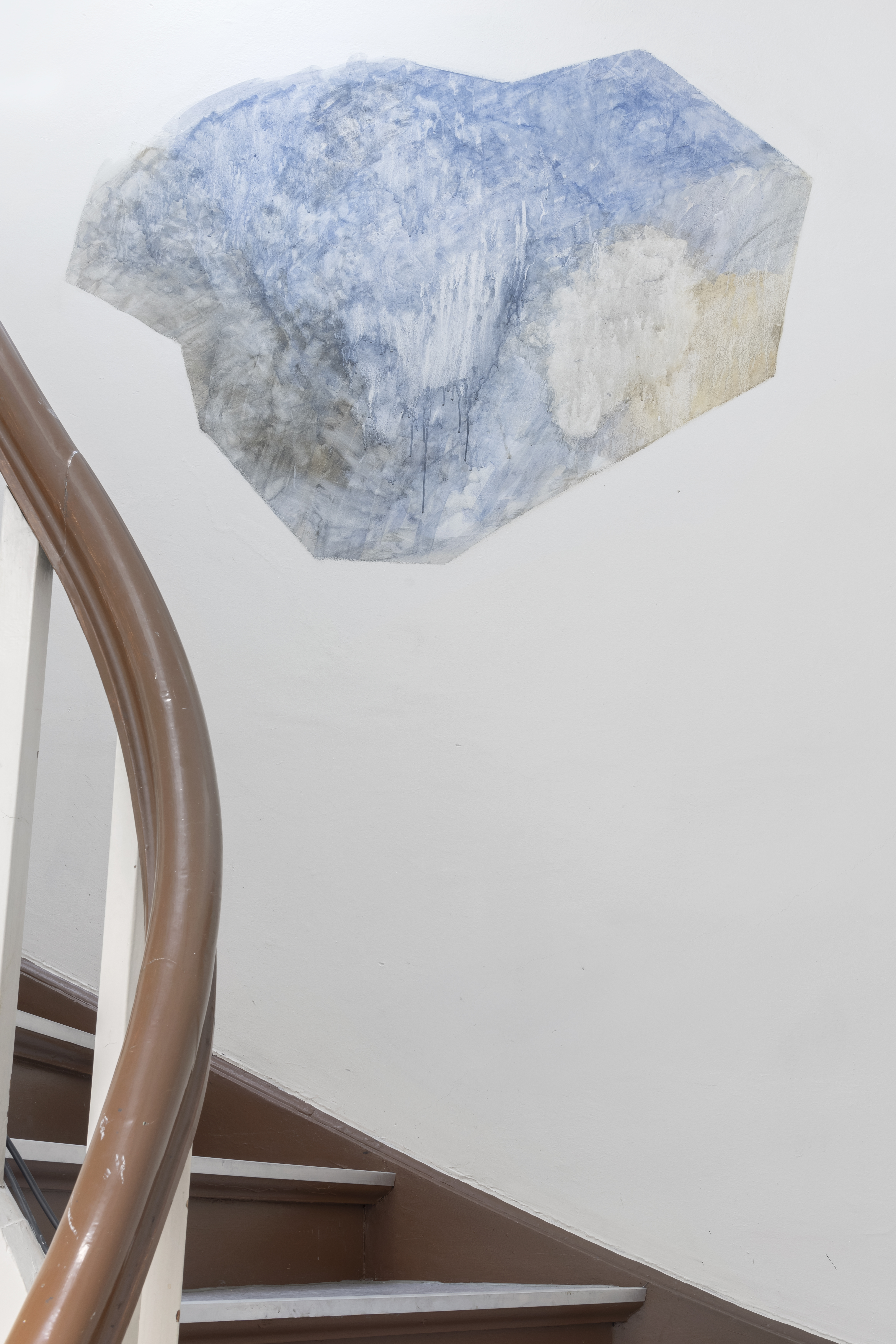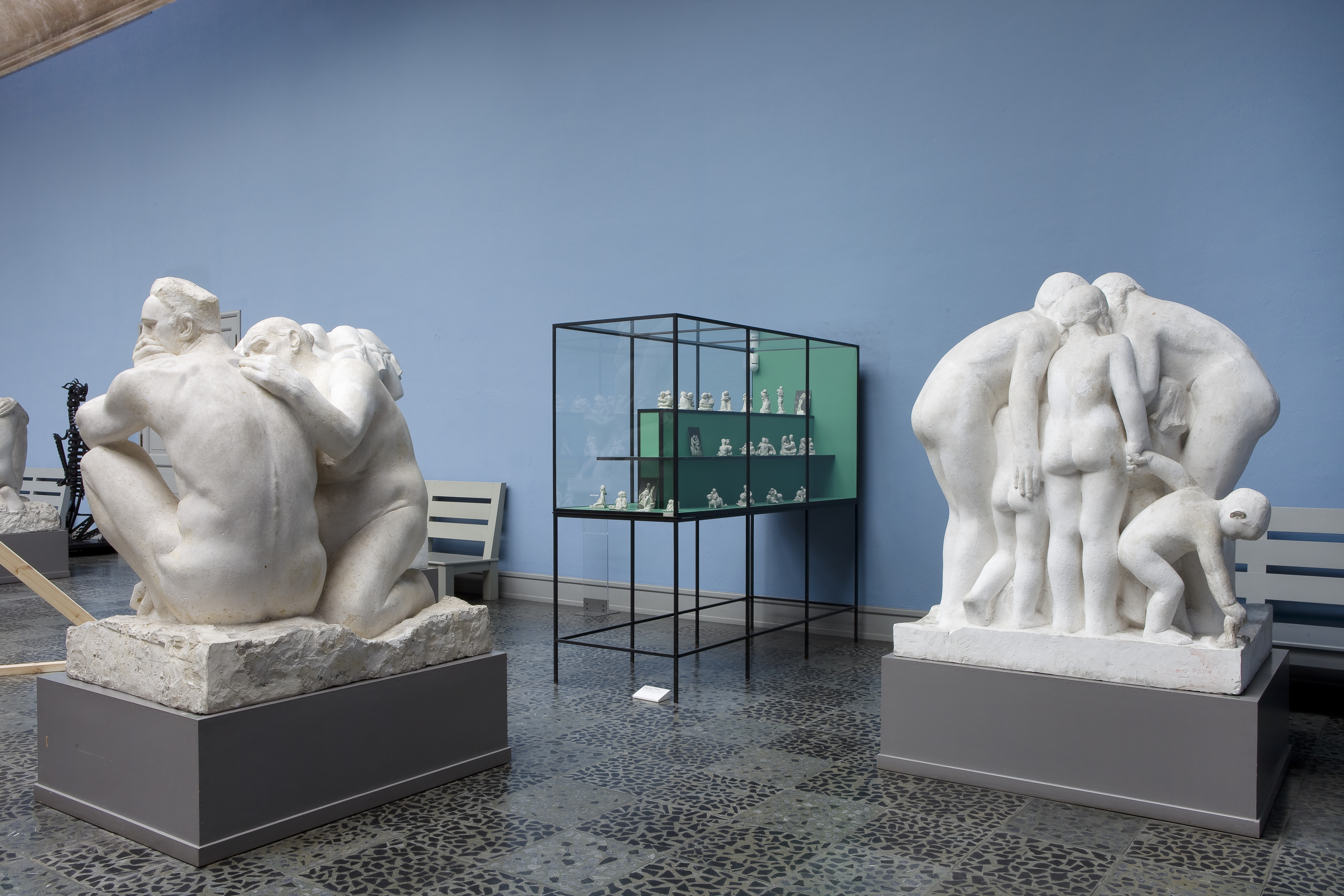Coral Energy, 2023
CORAL ENERGY (2023), consists of a current newspaper clipping, a poetic interpretation of the text, an audio piece (10 min loop), and tempera on the wall. The work is a collaboration between the artists Anna Carin Hedberg, Ebba Moi, and composer Victoria Nunes Finstad.
The newspaper clipping describes how the tanker Coral Energy transports natural gas across the Baltic Sea. The tanker drift aimlessly - causing large emissions, indefinitely circling around Gotland while waiting for demand for the raw material, which is currently unstable. This results in significant environmental emissions. The artwork addresses the injustice of the situation and can be described as both political and poetic.
The newspaper clipping describes how the tanker Coral Energy transports natural gas across the Baltic Sea. The tanker drift aimlessly - causing large emissions, indefinitely circling around Gotland while waiting for demand for the raw material, which is currently unstable. This results in significant environmental emissions. The artwork addresses the injustice of the situation and can be described as both political and poetic.
Victoria Nunes Finstad (1999) is a Norwegian composer who works on interdisciplinary pieces where text, performance, and visual expressions are processed through compositional thinking. She writes works for chamber ensembles, orchestras, and voice, among other things. Hedberg and Moi have been collaborating since 2003. In their works, they explore the concept of changes and investigate structures that address processes of change in society.
The work was exhibitied at Tegnetriennalen 2023.
Bitácora at Tenthaus, 13.10 - 22.12 2023.
The work was exhibitied at Tegnetriennalen 2023.
Bitácora at Tenthaus, 13.10 - 22.12 2023.



Photos: Øystein Thorvaldsen
Caoutchouc – The Weeping Tree, 2020 // Kautsjuk – det gråtende treet, 2020
It is a well-known fact that Norway and the Western countries have made great economic and social profits from industries that refine raw materials from formerly colonised countries. The work examines power structures in relation to raw materials and the development of industry in a globalised world.
The work is based on the production of the Viking rubber goods factory in Heggedal during the early 1900s. The film shows a workshop from September 2020 where the local theatre group Holmen senior theatre rehearsed a sound work by composer Victoria Finstad Nunes.
The sound piece is based on original texts about rubber goods production written by Vikings director P.M. Røwde, among others. The texts are put together by Moi and Hedberg and are a poetic description of the development of the rubber boom that started in Brazil and spread to the UK and Asia.
The work is based on the production of the Viking rubber goods factory in Heggedal during the early 1900s. The film shows a workshop from September 2020 where the local theatre group Holmen senior theatre rehearsed a sound work by composer Victoria Finstad Nunes.
The sound piece is based on original texts about rubber goods production written by Vikings director P.M. Røwde, among others. The texts are put together by Moi and Hedberg and are a poetic description of the development of the rubber boom that started in Brazil and spread to the UK and Asia.
Holmen teatergruppe with Johan Karlsen, Rygdi Margrete Gabrielsen, Sidsel Rødland Korsvoll, Unni Mølbach, Marit Lovise Kolstad
Teaterinstruktør Holmen seniorteater/ Cecilie Solberg Knudsen
Composition/ Viktoria Finstad Nunes
Film and clip/ Audun Severin Eftevåg
Film/ Benedikte Rønsen
Sound/ Florian Winther
Thank you to Teknisk museum i Oslo, Dag Henning Sæther, Asker kulturskole, Yngvild Færøy, Espen Tandberg og Per Sletaune ved Heggedal fabrikker, and a huge thank you to Holmen seniorteater og Cecile Solberg Knudsen.
Supported by Norsk Kulturråd and Billedkunstnernes Vederlagsfond
Exhibited at Trafo kunsthall 7.11 2020 - 7.2 2021 as a part of group exhibition Industri, and at Høstutstillingen 2022.
Teaterinstruktør Holmen seniorteater/ Cecilie Solberg Knudsen
Composition/ Viktoria Finstad Nunes
Film and clip/ Audun Severin Eftevåg
Film/ Benedikte Rønsen
Sound/ Florian Winther
Thank you to Teknisk museum i Oslo, Dag Henning Sæther, Asker kulturskole, Yngvild Færøy, Espen Tandberg og Per Sletaune ved Heggedal fabrikker, and a huge thank you to Holmen seniorteater og Cecile Solberg Knudsen.
Supported by Norsk Kulturråd and Billedkunstnernes Vederlagsfond
Exhibited at Trafo kunsthall 7.11 2020 - 7.2 2021 as a part of group exhibition Industri, and at Høstutstillingen 2022.

 Foto Jens Hamran
Foto Jens Hamran
Foto Jens Hamran
Formforandringer (Kvitebjørn kong Valemon)
et verk av Ebba Moi og Anna Carin Hedberg
I 2019 er det 150 år siden Gustav Vigeland (1869-1943) ble født, og i den forbindelse vil det gjennomføres et stort nasjonalt jubileum som skal synliggjøre hans posisjon i kunsthistorien. Med verket Formforandringer (Kvitebjørn kong Valemon) på Eidsvolls plass ønsker vi å belyse Vigelandjubileet gjennom å vise et verk som tar sin utgangspunkt i et originalt arbeid av Gustav Vigeland.
Verket er et prosess og verkstedsbasert samarbeide som tidligere blitt vist på Skulpturbiennalen i 2015/16. Disse ble til under en serie åpne verksteder på Vigelandsmuseet og Oslo Open. Her ble deltagere invitert i alle aldre til å se på skulpturer av Gustav Vigeland for å etterpå forme sine egne tolkninger. Repetisjonen innebærer at flere ser på hverandres tolkninger og at arbeidene skritt for skritt blir en poetisk variasjon av originalen. En form for hviskelek i tredimensjonal form. En folkelig demokratisering av Gustav Vigelands ikoniske verk.
På Eidsvolls plass vises en serie på tre figurer som tar utgangspunkt i Gustav Vigelands verk Kvitebjørn kong Valemon fra 1921,
Verket er et prosess og verkstedsbasert samarbeide som tidligere blitt vist på Skulpturbiennalen i 2015/16. Disse ble til under en serie åpne verksteder på Vigelandsmuseet og Oslo Open. Her ble deltagere invitert i alle aldre til å se på skulpturer av Gustav Vigeland for å etterpå forme sine egne tolkninger. Repetisjonen innebærer at flere ser på hverandres tolkninger og at arbeidene skritt for skritt blir en poetisk variasjon av originalen. En form for hviskelek i tredimensjonal form. En folkelig demokratisering av Gustav Vigelands ikoniske verk.
På Eidsvolls plass vises en serie på tre figurer som tar utgangspunkt i Gustav Vigelands verk Kvitebjørn kong Valemon fra 1921,
denne illustrerer fortellingen Kvitebjørn kong Valemon av Asbjørnsen & Moe. Her står en jente i sentrum, hun er drivkraften i historien og viser kraften i samarbeid. Uten respekt og hjelp fra andre kommer en ingen vei.
Ved bruk av offentlige plasser utvikler vi gitte kontekster som kan skaper nye assosiasjoner gjennom interaksjon. Stortinget er en plass for folket. Det er litt over hundre år siden kvinner fikk stemmerett i Norge og enda er det ikke et minnesmerke over stemmerettsjubileet i 2013. Gjennom å plassere et kunstverk basert på deltagelse og demokratiske prinsipper på Eidsvolls plass gir vi et annet bakteppe til Vigeland og de andre skulptørene som har kunstneriske portrett statuetter av menn rundt plassen foran stortinget. Det temporære monumentet retter et kritisk blikk på mannlige kanoniserte kunstnerskap, samtidig som det lar publikum sin stemme bli en del av tolkningen. Kunstverket står for en flerstemmig dialog, som stoler på folkets blikk, hukommelse, og gjenfortelling. Formforandringer (Kvitebjørn kong Valemon) viser et alternativt blikk hvor representasjon i forhold til minnesmerker over menn står i sentrum.
Ved bruk av offentlige plasser utvikler vi gitte kontekster som kan skaper nye assosiasjoner gjennom interaksjon. Stortinget er en plass for folket. Det er litt over hundre år siden kvinner fikk stemmerett i Norge og enda er det ikke et minnesmerke over stemmerettsjubileet i 2013. Gjennom å plassere et kunstverk basert på deltagelse og demokratiske prinsipper på Eidsvolls plass gir vi et annet bakteppe til Vigeland og de andre skulptørene som har kunstneriske portrett statuetter av menn rundt plassen foran stortinget. Det temporære monumentet retter et kritisk blikk på mannlige kanoniserte kunstnerskap, samtidig som det lar publikum sin stemme bli en del av tolkningen. Kunstverket står for en flerstemmig dialog, som stoler på folkets blikk, hukommelse, og gjenfortelling. Formforandringer (Kvitebjørn kong Valemon) viser et alternativt blikk hvor representasjon i forhold til minnesmerker over menn står i sentrum.
All photos by Øystein Thorvaldsen




Changes in Three Dimensions (2015)
Changes in Three Dimensions is a participative work where the audience has first viewed Gustav Vigeland’s exhibited sculptures, and then produced their own interpretations in clay. This piece involves a person being charged with interpreting the clay figure of the previous audience member, and so on. In this way, a number of figures have been produced over a period of time. The number of figures is based on the results of six different workshops.
In this project, the artists emphasise how we can interpret our own experience in an artistic idiom, whilst also acknowledging that the story is not an established truth.
In this project, the artists emphasise how we can interpret our own experience in an artistic idiom, whilst also acknowledging that the story is not an established truth.
Changes in Three Dimensions was first shown at The Norwegian Sculpture Biennial 2015 Art Belongs to Those Who See It, at The Vigeland Museum in Oslo in 2015. Curator Anne Szefer Karlsen.
Participants: A total of some 70 people participated at an open studio during the Oslo Open Art Festival, the Oslo Culture Night and at two workshops arranged during the Norwegian Sculpture Biennial at The Vigeland Museum.
Participants: A total of some 70 people participated at an open studio during the Oslo Open Art Festival, the Oslo Culture Night and at two workshops arranged during the Norwegian Sculpture Biennial at The Vigeland Museum.





Platform Huseby
Platform Huseby (2017) is an artistic collaboration that took place during Autumn 2016 until Spring 2017, between pupils from Huseby Lower Secondary School in Trondheim and the artists. Through an experimental investigation of the pupils’ own surroundings, Moi and Hedberg exploring how the sense of identity is established in relation to the familiar and unfamiliar. How do we establish relationships with the places with which we surround ourselves? The results of the process taking the form of a 22-metre drawing and concrete cast from the site where a new school is being built in Saupstad. The work was executed by the pupils of Huseby School.
Participants: 8th Grade Pupils from Vocational Training Course at Huseby School. Teacher: Mia Tallerås Dimmeldal. In collaboration with the Art in Schools project of The Cultural Rucksack in Trondheim.
Exhibition: Trøndelag senter for samtidskunst 2017
Photo from the exhibition: Ulla Schildt
Catalog: Ulf Carlsson
Exhibition: Trøndelag senter for samtidskunst 2017
Photo from the exhibition: Ulla Schildt
Catalog: Ulf Carlsson




